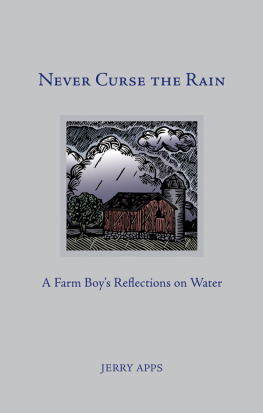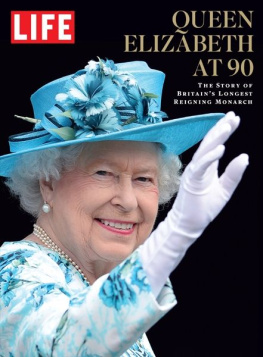First published in 1943 by Oxford University Press for the International African Institute.
This edition first published in 2018
by Routledge
2 Park Square, Milton Park, Abingdon, Oxon OX14 4RN
and by Routledge
711 Third Avenue, New York, NY 10017
Routledge is an imprint of the Taylor & Francis Group, an informa business
1943 International African Institute
All rights reserved. No part of this book may be reprinted or reproduced or utilised in any form or by any electronic, mechanical, or other means, now known or hereafter invented, including photocopying and recording, or in any information storage or retrieval system, without permission in writing from the publishers.
Trademark notice: Product or corporate names may be trademarks or registered trademarks, and are used only for identification and explanation without intent to infringe.
British Library Cataloguing in Publication Data
A catalogue record for this book is available from the British Library
ISBN: 9780815387138 (Set)
ISBN: 9780429488139 (Set) (ebk)
ISBN: 9781138589742 (Volume 39) (hbk)
ISBN: 9780429491436 (Volume 39) (ebk)
Publishers Note
The publisher has gone to great lengths to ensure the quality of this reprint but points out that some imperfections in the original copies may be apparent.
Disclaimer
The publisher has made every effort to trace copyright holders and would welcome correspondence from those they have been unable to trace.
Due to modern production methods, it has not been possible to reproduce the fold-out maps within the book. Please visit www.routledge.com to view them.
THE REALM
OF A RAIN-QUEEN
A STUDY OF THE PATTERN OF
LOEDU SOCIETY
By
E. JENSEN KRIGE, D.LITT. ( RAND ), M.A.
Author of The Social System of the Zulus
and
J. D. KRIGE, B.A., LL.B.
Advocate of the Transvaal Supreme Court; Lecturer in
Bantu Studies at Rhodes University College, Grahamstown
With a Foreword by
THE RT. HON. FIELD-MARSHAL
J. C. SMUTS
P.C., C.H.
Published for the
INTERNATIONAL INSTITUTE OF
AFRICAN LANGUAGES & CULTURES
oy the OXFORD UNIVERSITY PRESS
LONDON NEW YORK TORONTO
1943
To
A. W. HOERNL
The mother of Social Anthropology in South Africa
I AM interested in this book for two reasons. The first is that the authors are my nephew and his wifeboth devoted anthropologists, to whom this painstaking research into the least known of our South African native tribes has been a real labour of love. While earths foundations were shaking in the convulsion of our times they were absorbedly probing into the mysteries of the Rain-Queen and her timeless society. To me this seemed an almost unnatural devotion to scienceuntil I came to read the MS. of this book and found it a fascinating distraction to the war problems which form my daily life. Perhaps the curious reader may find it no less entertaining.
The second reason is that for at least half a century the Rain-Queen and her people and the curious stories about them have interested me. She was said to be very light coloured : was she a descendant of one of a couple of Boer girls who were said to have been spared by those natives, when early in the nineteenth century they massacred the Van Rensburg party without leaving a trace behind? What was the mystery about her which made it almost impossible for Europeans to catch a glimpse of her? Had the Natives adopted a white queen as something divine? Even if these were mere baseless fancies, other points of personal interest attracted me to the subject of the queen. Long ago one of my daughters, when a college girl, visited the country of the queen with a company of friends in the hope that they might be able to see her. In that mountainous, almost roadless country the party was overtaken by a violent rainstorm and late at night arrived at her headquarters drenched, exhausted, and more dead than alive. The queen ordered a hut to be cleaned and prepared for them where they stayed the night; and next day, having probably heard that she was the Prime Ministers daughter, gave a personal audience to her. Imagine the thrill! That established a personal bond between the queen and my wife, suitably recognized in the customary South African way. Then many years after, my nephew and his wife were staying at the headquarters of the queen in order to gather the material for this book. From time to time they informed me of the most interesting anthropological finds they were making. I also learnt that near her headquarters was a forest of cycads (Encephalartos transvenosus Burtt-Davy), one of the most unique botanical features in South Africa. This decided me at last to spend a holiday in the queens country, and, with my relatives as guides, I had a most interesting experience. I saw how they had, through simple humanness, overcome the fears and the shyness of the people and were on most familiar terms both with the queen and her subjects. I saw my cycad forest. Best of all, I saw that wonderful woman, well over sixty, but strong in body and character every inch a queen. We exchanged information and gifts in the traditional style, and I could thank her for her kindness to my daughter in the distant past. She was much taken up with all the useful domestic articles my wife had sent her. A couple of years afterwards I was once more Prime Minister, and I received a most charming letter from her, expressing her pleasure that she had met and personally knew the man who was wearing the crown of South Africa. Accepting the complimentary expression so kindly meant, I was equally pleased to have met a woman who so impressed me with her force of character and intangible air of authoritya woman who really was a queen. No wonder her subjects look upon her as the embodiment of their divine order. And yet that woman is the centrein the ritual of her tribeof a great tragedy which awaits her, as it has awaited her predecessors. That ritual carries us back to the most dim and distant past of the human race, and the interested reader will find it in this book. Mujaji is one of the high lights of anthropology, and, looking at her calm, strong face, I wondered what she thought of the fate in store for her. Here are the tears in things mortal.
This book is interesting from another point of view. It paints the picture of a Native society in which the pattern or plan of the whole determines the character of all the main lines of detail. Religion, law, ethics, social institutions, all fit naturally and almost logically into the scheme as a wholethey appear to be products of the central pattern which has stamped its character on all the details. The social sanctions in law, religion, ethics, &c., are not external and superimposed on the social practice, but flow from the fundamental social system itself as its natural outcome. All are in one degree or another internal to the system. The writers of this study have succeeded in penetrating to this inner core of this particular type of Native society, and in showing the balance and harmony of the system as a whole. This gives, in my opinion, a very special anthropological value to this study.












